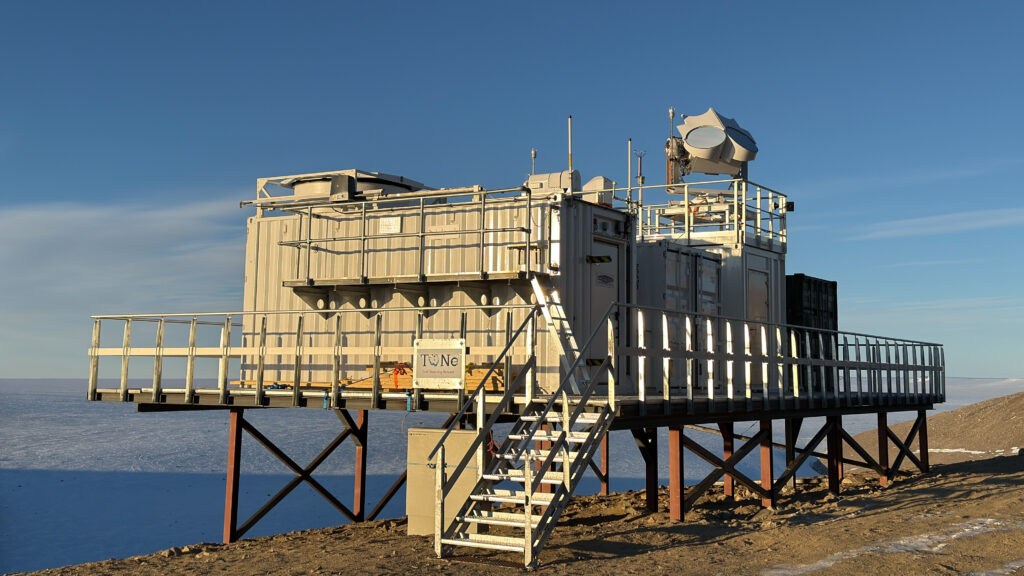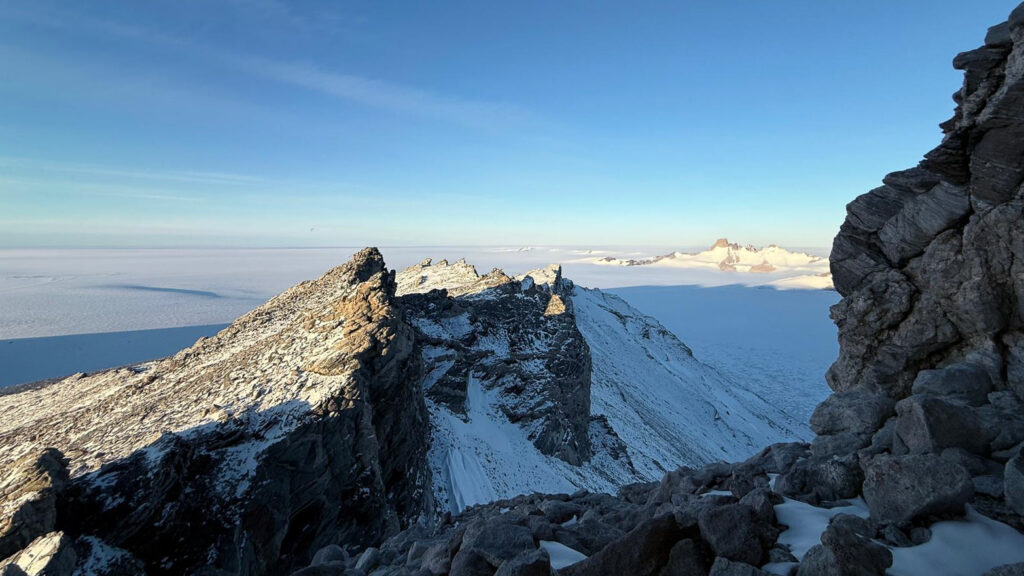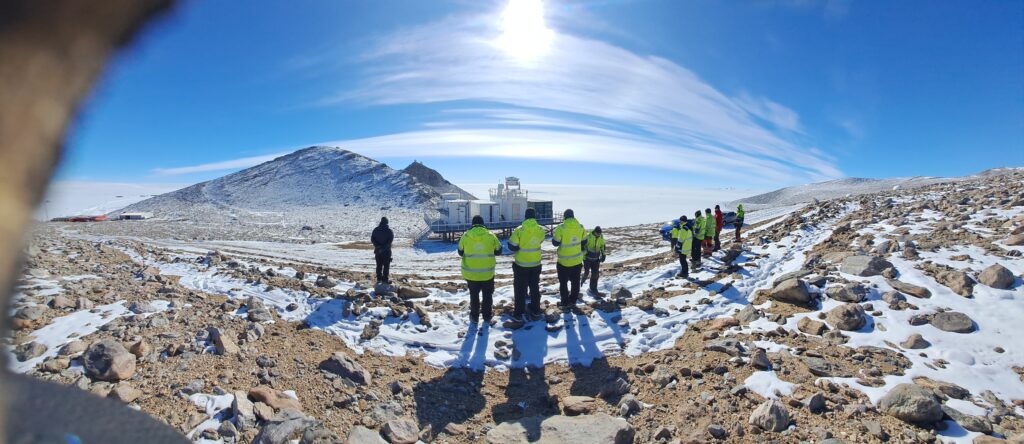
Observatory in Antarctica enables scientists to study clouds like never before
Antarctica is unlike any other place on Earth. Harsh yet fragile, it plays a vital role in our planet’s climate.
An international team of scientists and engineers set out to the remote and fascinating continent to build a cloud observatory and enable science that’s never been done in this part of the world.
Introducing the Integrated Cloud Observatory and the Troll Observing Network
Due to global warming, Antarctica is changing, and these changes impact the rest of the planet and our lives on it. This is why long-term observations in Antarctica are essential – they enhance our understanding of atmospheric processes, provide early warning systems for potential disruptions, and support the work on informed policies for societal development and environmental conservation.
In January this year, an international team of researchers travelled to the Troll research station in Antarctica to oversee the construction of the Integrated Cloud Observatory (ICO). Among other tools, the observatory is equipped with a microwave radiometer, a depolarisation lidar, a cloud radar, and an automated radiosonde launcher.
One of the main goals of the observatory is to enhance the predictions of the sea level rise – a critical challenge in researching climate change. The observatory also enables scientists to improve their understanding of the Antarctic ice sheet, which influences the entire global climate system.
The ICO is part of the wider Troll Observing Network (TONe). Located on the Dronning Maud Land, TONe will be a multi-platform observing network, providing the international research community with essential free data.

Building an observatory in one of the most remote parts of the Earth
The TONe-ICO expedition was led by Dr Stephen Hudson of the Norwegian Polar Institute (NPI), and the team consisted of five other scientists from the UK, the USA, and Norway. Among them was Dr Ryan R. Neely III, an Associate Professor of Observational Atmospheric Science at the National Centre for Atmospheric Science (NCAS) and the University of Leeds. The other team members included Dr Michael Town at Earth and Space Research, Marius Bratrein at NPI, Von Walden at Washington State University, and Even Birkeland at NPI.
Their work was also supported by over 40 NPI personnel who provided extensive planning and technical expertise, both in advance of our arrival and on the ground at Troll. The logistical coordination provided by NPI ensured that 7 tonnes of equipment, which forms the ICO were purchased, packed, and shipped on time, arriving in excellent condition. NPI’s field team also designed and constructed a stable, level and robust foundation in an environment that is not only extremely cold but regularly experiences hurricane-force winds, enabling the successful deployment of the instrumentation. “When it came time to level the instruments, we found them already perfectly aligned – a testament to the care, skill, and preparation that went into every stage of the build,” says Dr Michael Town from Earth and Space Research.
The TONe-ICO team is also being supported by a crew of six NPI employees who are overwintering at Troll. This includes Øystein Tykhelle Amdal, who is tasked with being the team’s hands whilst the station is inaccessible.
Through Oslo, Prague and Cape Town, and with bags packed with extreme cold weather clothing and a few scientific instruments, the team landed on the icy runway in mid-January. Neely reflects on his arrival:
“After years of planning and a five-and-a-half-hour flight from Cape Town, we finally touched down at Troll Airfield. The experience was nothing short of surreal. The Boeing 737 glided smoothly onto the ice sheet as if it were landing on a conventional runway anywhere else. From the comfort of a ‘normal’ plane seat, I gazed out the window at the vast, otherworldly expanse of East Antarctica, a sharp contrast with being on a plane I would typically take from Leeds to Oslo. It was a moment where the extraordinary felt almost ordinary – a juxtaposition that will stay with me for a lifetime.”
Meanwhile, cargo ships, cranes, and a train on skis delivered the cargo, which eventually became buildings to house the observatory. Over the next month, the team oversaw the construction of the ICO platform, the mounting of instruments, and the setup of the computer system, before getting down to analysing the fresh data.
We went from a steel foundation poking out of the ground to having an operating observatory that processes and publishes in near-real time. It was true end-to-end observational science at the end of the Earth.
– Dr Ryan R. Neely III, an Associate Professor of Observational Atmospheric Science at the National Centre for Atmospheric Science (NCAS) and the University of Leeds


Setting new scientific standards with robotic weather balloon launches and scanning cloud radar
Also known as radiosondes, weather balloons gather data about the temperature, pressure, humidity, and wind, which helps scientists to understand different atmospheric conditions like clear skies, storms, and windy periods. Weather balloons are an essential tool to study the changes in the atmosphere.
The ICO is equipped with a robot weather balloon launcher. Why is this so exciting? Normally, the launching of weather balloons is a time-consuming task requiring human intervention and manual labour. The robot launcher fills the balloons with hydrogen gas and releases them through an automatic hatch by itself. In the harsh conditions of Antarctica, this is a ground-breaking advancement in what scientists can achieve here.
This launcher is also more sustainable than the traditional methods because of its use of hydrogen instead of the more popular helium. No gas needs to be shipped to the observatory – instead, there is a facility to create hydrogen with the use of electrolysis.
“I’m hoping that this will become a new standard in how we launch radiosondes as part of our ongoing efforts to be sustainable stewards of this environment as we’re observing it,” says Neely.
The ICO is also home to Antarctica’s only scanning cloud radar – a powerful instrument that can detect clouds and weather patterns up to 15 kilometres away in all directions. This gives scientists an extraordinary view not only of the atmosphere directly above the ICO, but also of the wider surrounding region.
“This unique capability is especially exciting because it allows researchers to study how clouds and precipitation form and move over the rugged terrain near the Troll research station. The area’s complex topography, combined with its remote and under-explored nature, makes it a fascinating location for understanding how Antarctica’s landscape influences its weather and climate,” Neely explains.
Further information
Troll Station is located at -72.0 S, +2.5 E, 1320m AMSL in Antarctica and is the station in the escarpment region of Dronning Maud Land.
The Integrated Cloud Observatory (ICO) is part of the Troll Observing Network (TONe), operated by the Norwegian Polar Institute.
Near-real-time observations and retrievals may be seen and downloaded from https://cloudnet.fmi.fi/site/troll.
